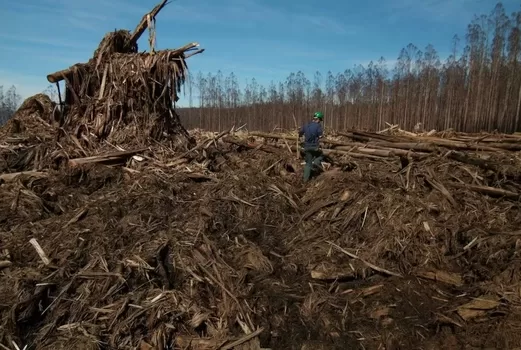Forestry Corporation is failing to comply with the law: Auditor General report into the regulation of public native forestry
A new report published by the Auditor general today has been critical of the Forestry Corporation’s processes and assessments for non-compliance during logging operations across our public native forest estate.
The report has also identified that the Environment Protection Authority needs to increase the resources and training provided to compliance officers to ensure they are able to complete their job regulating the logging of our native forests.
Greens MP Sue Higginson and spokesperson for the Environment said:
“This report is confirmation that the NSW Forestry Corporation is failing in their legal and compliance obligations. Unfortunately, this does not come as a surprise.
Not a whole lot has changed in the past decade since a Judge of the Land and Environment Court found the Forestry Corporation has a culture of non-compliance.
“Native forest logging costs NSW tens of millions just in the harvesting and haulage, if we add the expenses of the EPA having to monitor all of the non-compliant operations, then the bill blows out even more.
Recent cases where the EPA has prosecuted the Forestry Corporation have resulted in hundreds of thousands of dollars in fines and court costs.
It is unreasonable that a government agency has to sue a State-Owned Corporation at a cost to NSW residents to enforce compliance of the law while damaging our forests.
“The lack of risk-based assessments for logging sites and for quality assurance is a red flag that Forestry Corporation is playing fast and loose with their responsibilities. It is exceptionally concerning that the Corporation is not even measuring whether they are tracking towards their zero-non-compliance goal.
“The Environment Protection Authority should be the first line of defence against unlawful forestry operations, but they currently aren’t, they need training and equipment that allows them to conduct this vital work and a whole lot more money. It would be an absolute absurdity to have to go down this path now.
The case to end logging the public forest estate has been made. It is costing taxpayers millions of dollars in losses and subsidies every year to prop up the industry and cause further harm and destruction to our precious forests including koala habitat. The NSW Government needs to look to VIC and WA and hasten the inevitable.
“With this new evidence about the non-compliance of native forest logging in NSW, it is untenable for the Government to allow native forest operations to continue, especially in vulnerable areas – and particularly in the proposed Great Koala National Park.
“There are serious concerns that the Forestry Corporation is conducting a grab and run in our native forests. The industry is on its last legs, and they are smashing our very valuable public native forests before they go.”
Sue Higginson, Greens MP said
Forestry Corporation “accepts the recommendations”
In response to the Auditor General’s findings, Forestry Corp issued the following statement:
Forestry Corporation accepts the recommendations of the NSW Audit Office and is committed to making continued improvements to our operations where necessary.
Our staff care passionately about the forests they work in and, over the last three years, we have significantly increased our efforts around compliance. This has included investment in technology solutions, putting more staff on the ground and a regular program of internal audits to supplement the external audits undertaken by our third party certifier and the EPA as the regulator.
We will work through the recommendations from the Audit Office to action all opportunities available to further improve our processes.
The Auditor General found:
Forestry Corporation of NSW (FCNSW) clearly articulates its compliance obligations at the
corporate level and for each harvest site. However, there are deficiencies in FCNSW’s compliance approach.
While FCNSW undertakes monitoring of its contractors in a number of ways, it does not consistently monitor compliance across its contractors and does not target its monitoring activities on a risk basis. This increases the risk that non-compliant practices will not be identified, potentially leading to environmental harm.
FCNSW has a compliance strategy and program that sets out its compliance obligations and how they will be managed. FCNSW’s Compliance Policy outlines compliance requirements, actions to ensure compliance, and responsibilities for staff, supervisors, senior management and board members.
FCNSW also has a compliance monitoring system manual that outlines its monitoring program, and its risk assessment and incident reporting procedures. These corporate documents set out FCNSW’s overall approach to managing compliance.
Harvesting in State Forests is undertaken by contractors or sub-contractors. FCNSW provides training to its staff and contractors and undertakes monitoring to identify contractor compliance with relevant requirements through a variety of means, including its quality assurance assessment (QAA) program. FCNSW also communicates compliance obligations to contractors in harvest plans.
FCNSW is not undertaking its monitoring activities on a risk basis. The frequency of contractor supervision is inconsistent and is not tied to the contractor’s past performance, meaning that monitoring resources are not necessarily being targeted at the areas of highest risk.
FCNSW also does not target its QAAs on a risk basis. FCNSW does not have procedures for how QAAs should occur outside the North Coast region. QAAs are conducted inconsistently, with some reviews occurring in only part of the harvest site while others cover the whole harvest site.
In addition, some QAAs do not meet FCNSW’s minimum standards. FCNSW’s record keeping of QAAs is also inconsistent, making it difficult to determine true levels of compliance and the cause of identified potential non-compliances.
In addition, FCNSW does not collate and analyse the results of its compliance monitoring to target its compliance audits. Undertaking these audits on a risk basis would allow FCNSW to apply its resources to the highest risk harvest sites and contractors.
The EPA identifies native forestry as a high priority regulatory activity and undertakes proactive inspections of Coastal IFOA harvest sites on a risk basis. However, the EPA does not assess the risk at Western IFOA harvest sites, leaving a significant gap in its inspection regime.
This means that the EPA may not be inspecting all high-risk harvest sites to ensure compliance with regulations across those sites. The EPA has started to train more of its staff in conducting forestry inspections, but it currently has a limited number of trained and experienced staff to undertake this work.
The EPA has developed a Regulatory and Compliance Priorities Statement 2022–23 which identifies native forestry as a key risk. This statement identifies that forestry is a priority area for its compliance activities because of the increased environmental risk and sensitivity in forests following the 2019–20 bushfires.
A divisional plan for its regulatory operations contains specific actions for forestry, including ensuring that the EPA has a consistent approach to recording regulatory actions undertaken and identifying priority areas for assurance over State Forests.
As part of its compliance activities, the EPA responds to complaints received, or reports of non-compliance, across all four IFOA areas and also carries out proactive inspections in the Coastal IFOA area.
To guide these inspections, the EPA determines the level of risk posed by each harvest site in the Coastal IFOA area using information it gathers from FCNSW. The EPA prioritises inspections of sites rated as high and medium-risk, but the EPA has not undertaken risk assessments for the three Western IFOAs.
By not determining the risks in these areas, the EPA does not have assurance that it is checking FCNSW compliance with regulations across all high-risk sites.
Most EPA staff have basic training in forestry matters, but few staff have the more advanced training required to effectively undertake forestry inspections.
In addition, not all EPA officers have access to the technology required to undertake forestry inspections, such as internet-enabled tablets and specialised tapes for measuring tree diameter.
This limits the EPA’s ability to determine the level of compliance with regulations and respond effectively to instances of environmental harm in relation to public native forestry.
The Coastal IFOA does not contain provisions which allow the EPA to unilaterally restrict forestry activities in the aftermath of a catastrophic event such as the 2019–20 bushfires.
Following the bushfires, FCNSW approached the EPA and asked for additional site-specific operating conditions (SSOC) at some locations to assist it in maintaining compliance. The SSOCs were issued by the EPA and FCNSW was required to carry out forestry operations in accordance with the SSOCs at relevant harvest sites.
These SSOCs were in place for 12 months. After a year, FCNSW decided not to renew this approach with the EPA, but implemented its own voluntary measures during harvesting operations. Unlike the SSOCs, the EPA was unable to undertake enforcement activities for breaches of voluntary measures.
See also: NSW Minister Tara Moriarty visits Forestry Corp at Bagawa State Forest
What can NSW Government do to stop koala extinction
Forest action spreads to Doubleduke & Lorne State Forests
NSW Nationals motion on the Forestry Industry, 31 May 2023
A burnt & logged nature reserve is not a nature reserve
Legal challenge to New South Wales Regional Forest Agreement (RFA)
Taxpayers hit with $5 million bill for Forestry Corp to log koala habitat




